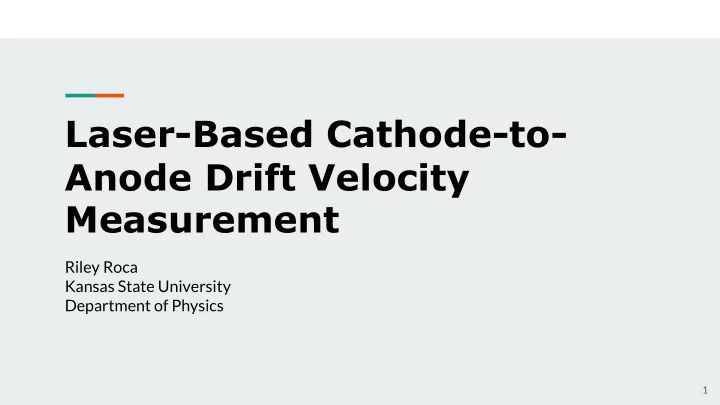

Laser-Based Cathode-to- Anode Drift Velocity Measurement Riley Roca Kansas State University Department of Physics 1
MicroBooNE Detector at Fermilab MicroBooNE is a 170-ton liquid-argon time projection chamber ● (LArTPC) Was built to do experiments that study neutrino ● interactions Criss-Crossing wires detect the electrons from ● the ionization of the Argon https://www.researchgate.net/figure/Schematic-diagram-of-MicroBooNE-detector_fig1_283471311 2
Event occurs in the Argon and the ● electrons drift because of the applied electric field https://www.phy.bnl.gov/wire-cell/ 3
UV laser ionizes the Argon ● 4
Laser Data Average Drift Time ● Averaged over all wires ● Time Tick 5
Cathode Splashing - Electrons liberated from the cathode plane via the photoelectric effect - 1.103 μ m/ms at ~.273 kV/cm Time ticks 6
Event Display Wire number Time tick Event from run 1591 7
.234 kV/cm 8
.195 kV/cm Wire 9
Drift Velocity Amoruso, et al., NIM A, 516, 68-79 Li, et al, NIM 816 160 (2016) MicroBooNE-doc-16311 LArSoft 10
Future Directions E-fields of strength between .195 ~.273 kV/cm ● Possible error sources to investigate ● Measurement of Length from Anode to Cathode ○ Flatness of Cathode ○ The E-field is not uniform due to Space Charge ○ 11
Acknowledgements Glenn Horton-Smith Tim Bolton Joseph Zennamo Fermilab MicroBooNE project Kansas State NSF REU Kim Coy Document 5509-v9 12
Recommend
More recommend